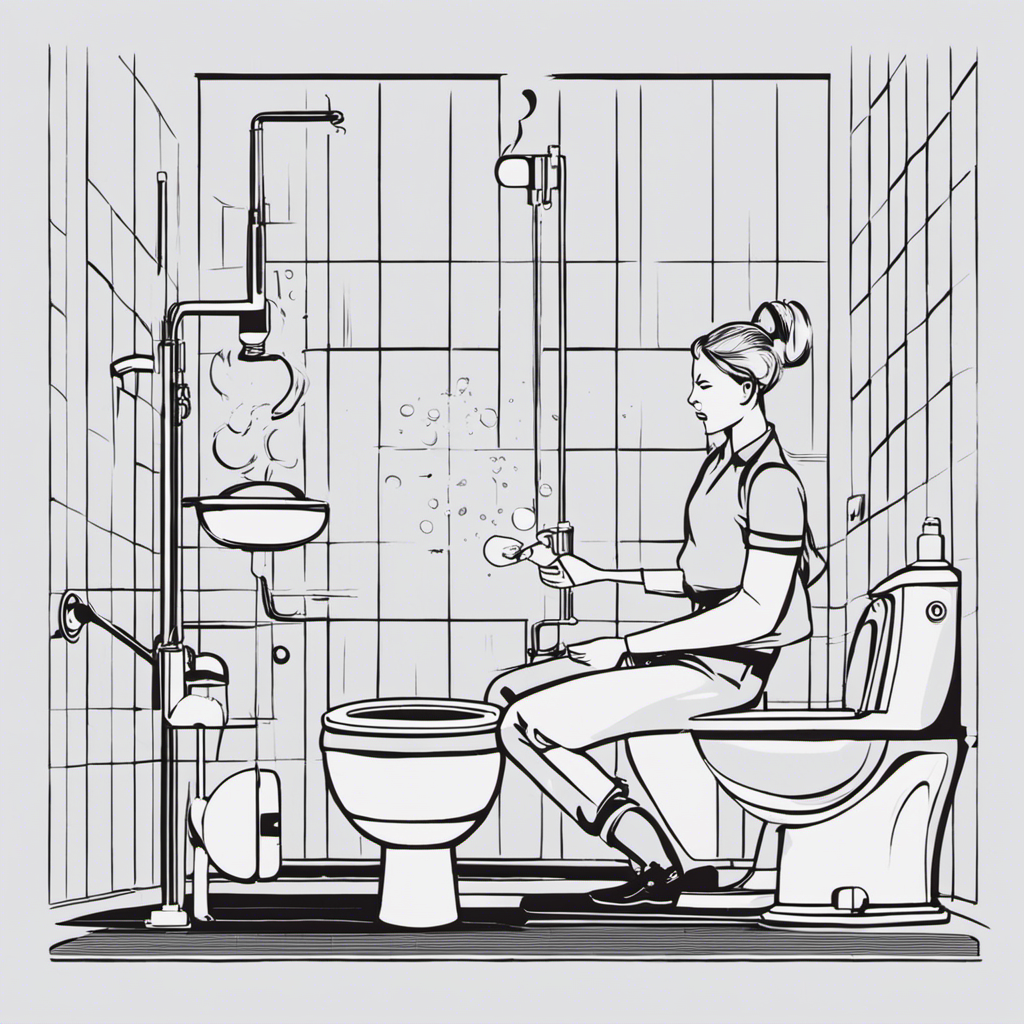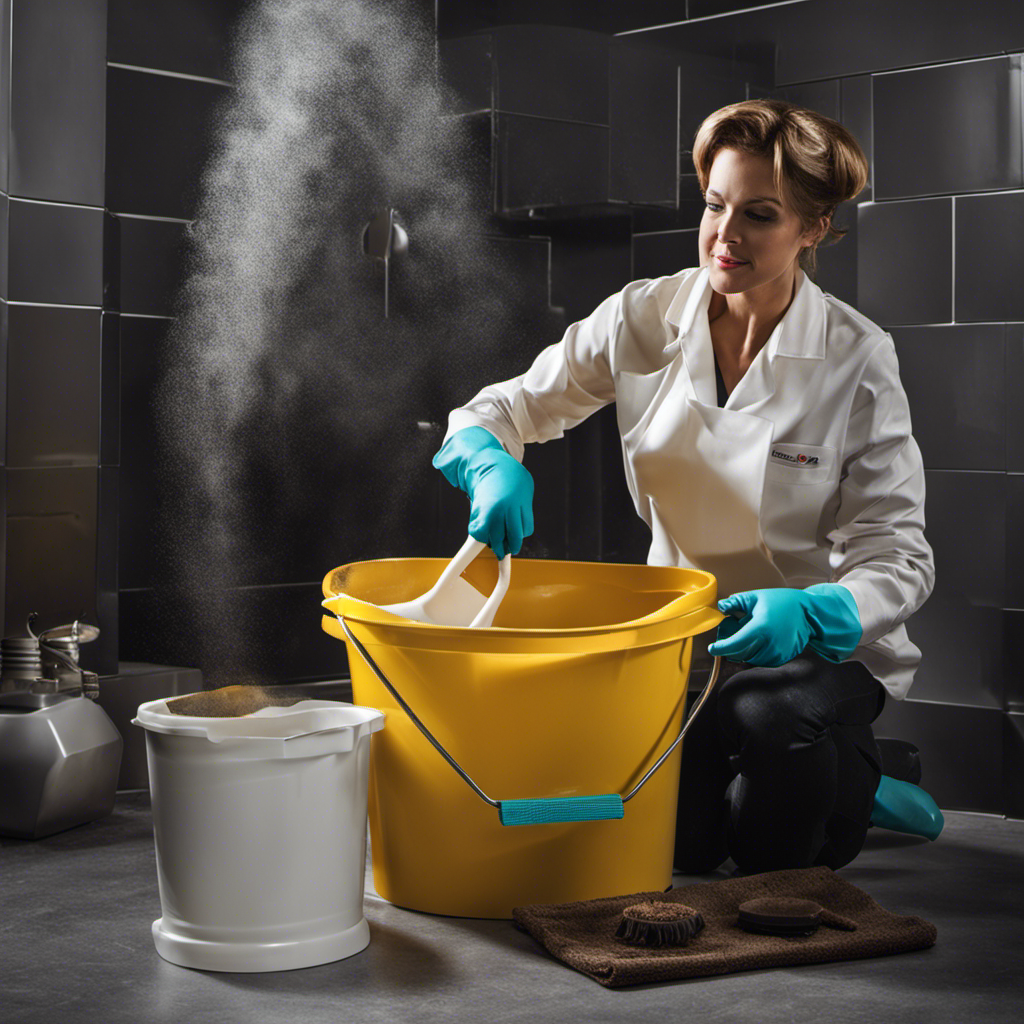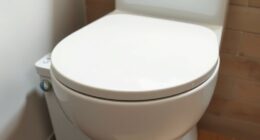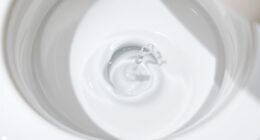As a plumbing expert, I’ve honed some reliable methods for dealing with the troublesome issue of hair blockages in drains.
From vinegar and baking soda to enzyme-based cleaners, there are various solutions that dissolve hair effectively.
Hydrogen peroxide and chemical hair removal products also work wonders.
If you’re feeling adventurous, try using a drain snake or wet/dry vacuum.
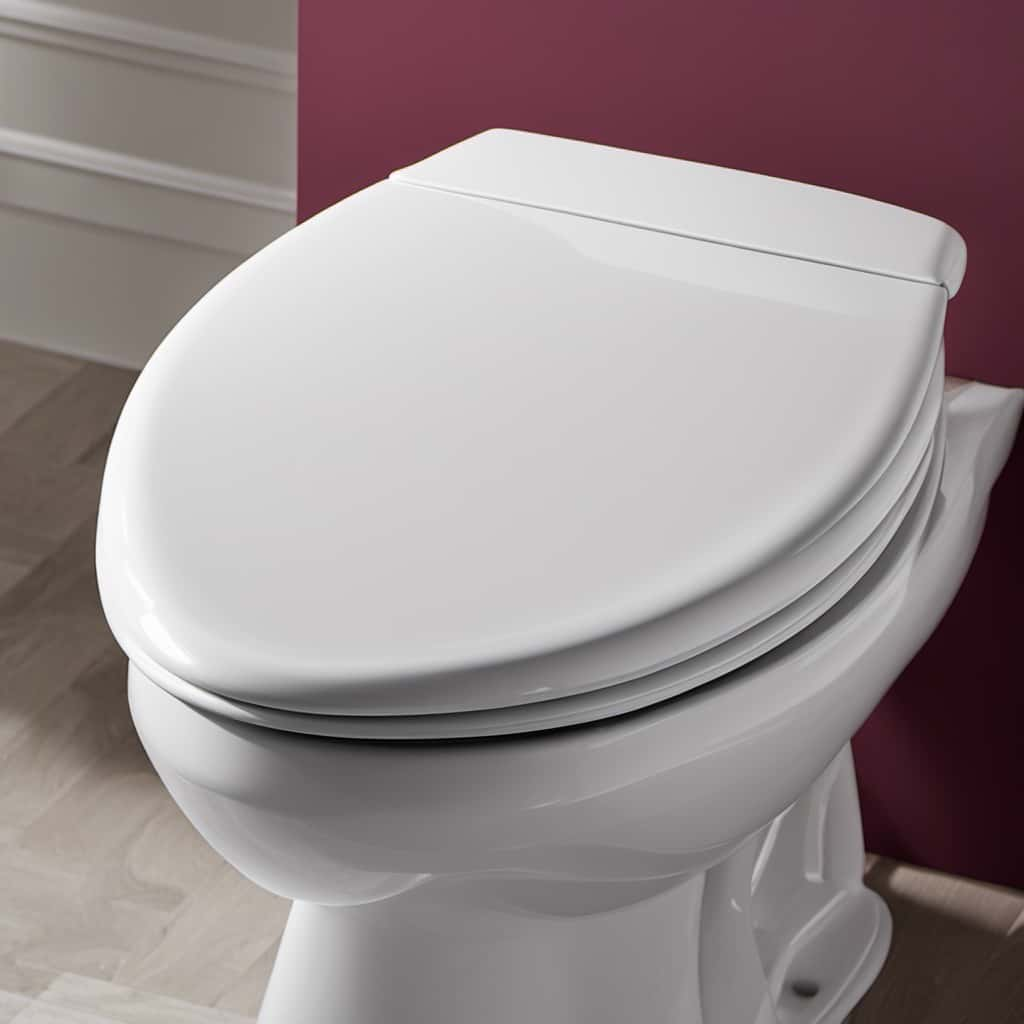
And when all else fails, it’s time to call in the experts.
Get ready to master the art of keeping your drains hair-free!
Key Takeaways
- Vinegar and baking soda can be used to dissolve hair in drains by creating a chemical reaction that breaks down the hair.
- Hydrogen peroxide is an effective and cost-effective solution for dissolving hair in drains, but safety precautions should be taken when using it.
- Enzyme-based drain cleaners are a natural and eco-friendly alternative for breaking down organic matter, including hair, in drains.
- Mechanical methods such as using hot water flush, wire or drain snake, and wet/dry vacuum can be effective in removing hair clogs from drains and preventing future clogs.
Vinegar and Baking Soda
Vinegar and baking soda are two natural drain unclogging methods that can effectively dissolve hair in drains. These DIY hair removal solutions aren’t only cost-effective but also environmentally friendly alternatives to commercial drain cleaners.
When vinegar and baking soda are combined, a chemical reaction occurs, creating a fizzy foam that helps break down and dislodge hair clogs in drains. The acidic nature of vinegar helps dissolve the hair, while the alkaline properties of baking soda help to neutralize odors and further break down any residue.

To use this method, start by pouring a pot of boiling water down the drain to loosen any debris. Then, pour half a cup of baking soda down the drain, followed by a mixture of one cup of vinegar and one cup of hot water. Allow the mixture to sit for about 15 minutes, allowing it to work its magic. Finally, flush the drain with hot water to clear away any remaining hair and residue.
It is important to note that this method may not work for severe or stubborn clogs. In such cases, it’s advisable to contact a professional plumber for assistance. However, for regular maintenance or minor clogs, vinegar and baking soda can be a powerful duo in keeping your drains clear and hair-free.
Hydrogen Peroxide
When using natural methods to dissolve hair in drains, another effective option is hydrogen peroxide. Hydrogen peroxide, or H2O2, is a chemical compound that consists of two hydrogen atoms bonded to two oxygen atoms. It’s a powerful oxidizer and is commonly used as a disinfectant and bleaching agent.
Here are some benefits of using hydrogen peroxide to dissolve hair in drains:

- Effectiveness: Hydrogen peroxide can break down the proteins in hair, making it easier to remove from drains.
- Versatility: It can be used on various types of drains, including bathroom and kitchen sinks, shower drains, and bathtub drains.
- Cost-effective: Hydrogen peroxide is an affordable solution compared to commercial drain cleaners.
However, it’s important to take safety precautions when using hydrogen peroxide:
- Wear gloves and protective eyewear to prevent skin and eye irritation.
- Avoid mixing hydrogen peroxide with other chemicals, as it can produce harmful fumes.
- Rinse the drain thoroughly after using hydrogen peroxide to prevent any residue from causing damage.
Enzyme-based Drain Cleaners
Another effective option for dissolving hair in drains is using enzyme-based drain cleaners. Enzymes are naturally occurring substances that can break down organic matter, such as hair, grease, and food particles, into smaller, more manageable components. These drain cleaners are considered a natural and eco-friendly alternative to harsh chemical cleaners.
Enzyme-based drain cleaners work by introducing specific enzymes into the drain system. These enzymes target the proteins in hair and break them down into smaller molecules, which can then be easily flushed away. This process is highly effective in removing hair clogs and preventing future blockages.
One of the main advantages of enzyme-based drain cleaners is their effectiveness. Unlike other drain cleaning methods, enzymes specifically target the source of the clog, ensuring a thorough and long-lasting solution. Additionally, enzyme-based cleaners are safe to use on all types of pipes, including plastic and metal.
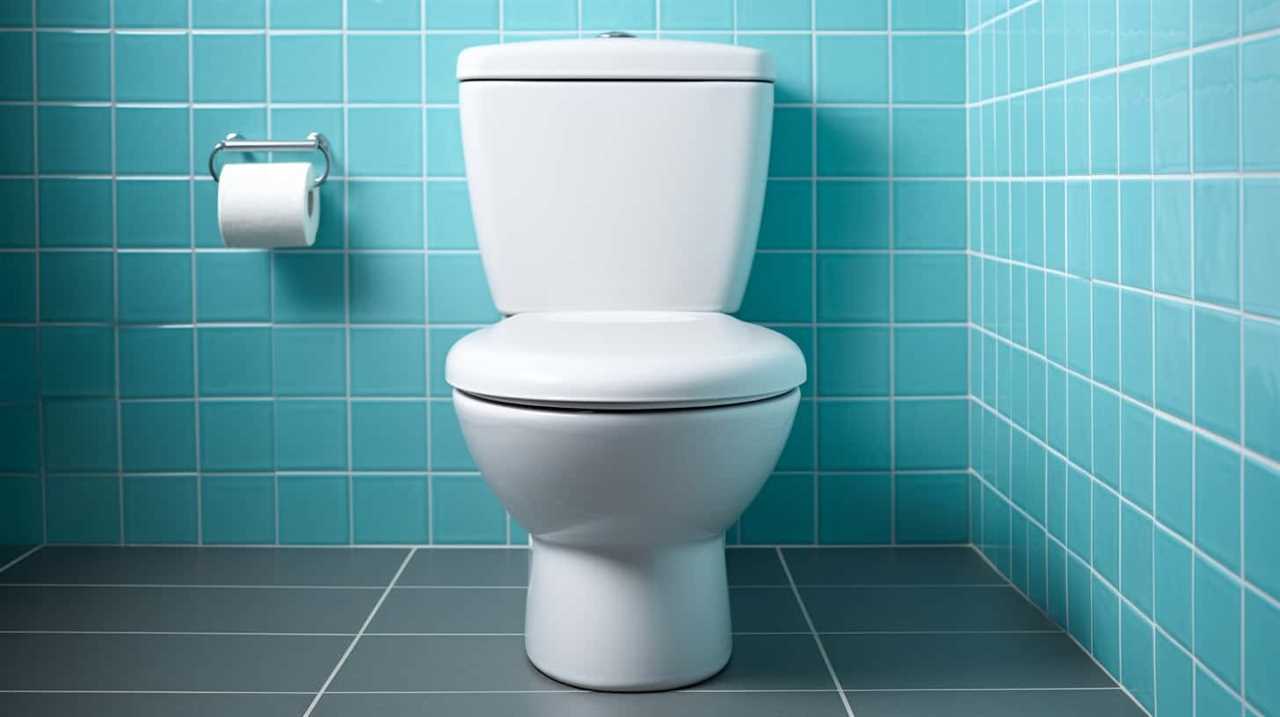
Furthermore, enzyme-based drain cleaners are considered a natural alternative to chemical cleaners. They don’t contain harsh chemicals that can be harmful to the environment or human health. This makes them an appealing choice for individuals who prefer environmentally-friendly options.
Chemical Hair Removal Products
I prefer using chemical hair removal products to dissolve hair in drains. They’re effective and convenient solutions for keeping drains clear and free from clogs caused by hair buildup.
Here are some important points to consider when using chemical hair removal products:
- Efficiency: Chemical hair removal products are specifically formulated to break down hair and dissolve it, making them highly effective in removing hair clogs from drains.
- Convenience: These products are readily available in most stores and can be easily purchased without the need for any special preparation or ingredients.
- Safety: While chemical hair removal products are generally safe to use, it’s important to follow the instructions carefully to avoid any potential risks. Some products may contain strong chemicals that could cause skin irritation or damage if not used correctly.
It is worth noting that there are also homemade remedies available for dissolving hair in drains. However, these may not be as effective or reliable as chemical hair removal products. Additionally, homemade remedies may carry their own potential risks and require more time and effort to prepare.

When using chemical hair removal products, it’s always advisable to take proper precautions, such as wearing gloves and ensuring good ventilation in the area. By following the instructions and using these products responsibly, you can effectively dissolve hair in drains and prevent future clogs.
Hot Water Flush
To continue the discussion on removing hair from drains using chemical hair removal products, one effective method is a hot water flush. This method involves pouring a large amount of hot water down the drain to break down and flush away any hair clogs. Hot water is effective because it helps to dissolve the oils and grease that often accompany hair clogs, allowing them to be easily washed away.
A hot water flush is a simple and natural way to prevent clogged drains without the use of harsh chemicals. By regularly pouring hot water down your drains, you can help to loosen and remove any hair buildup before it becomes a problem. This can be especially beneficial in preventing clogs in bathroom drains, where hair is a common culprit.
It is important to note that while a hot water flush can be effective in preventing clogs, it may not be as effective in removing existing hair clogs. For stubborn clogs, it may be necessary to use a chemical hair removal product or a mechanical tool such as a drain snake.

Wire or Drain Snake
Using a wire or drain snake is an effective method to remove stubborn hair clogs from drains. DIY solutions can save time and money when facing a clogged drain. Here are three reasons why using a wire or drain snake is a smart choice:
- Versatility: A wire or drain snake can navigate through pipes of various sizes, making it suitable for different types of drains. Whether it’s a bathroom sink, shower, or bathtub, this tool can reach the clog and extract the hair efficiently.
- Precision: Unlike other DIY solutions, a wire or drain snake provides a targeted approach to unclogging drains. By maneuvering the tool directly into the clog, it ensures that the hair is removed completely, minimizing the risk of future blockages.
- Cost-effective: Investing in a wire or drain snake is a cost-effective solution for recurring clogs caused by hair. It eliminates the need for expensive professional services and allows homeowners to tackle the issue themselves.
Now that we understand the benefits of using a wire or drain snake, let’s explore another powerful tool that can help combat hair clogs: the wet/dry vacuum.
Wet/Dry Vacuum
Continuing from the previous subtopic, I found that using a wire or drain snake was an effective method for removing hair clogs, but now let’s explore another powerful tool that can help combat hair clogs: the wet/dry vacuum.
A wet/dry vacuum is a versatile cleaning tool that can handle both wet and dry substances, making it perfect for dealing with hair clogs in drains.

To maintain your wet/dry vacuum and ensure optimal performance, regular cleaning is essential. Empty the debris canister after each use and clean the filters regularly to prevent clogging and maintain suction power. It’s also important to check the hoses and attachments for any blockages or damages that may affect the vacuum’s performance.
There are different types of wet/dry vacuums available, each with its own features and capabilities. Some models come with attachments specifically designed for unclogging drains, such as crevice tools or drain cleaning kits. These attachments can make the process of removing hair clogs even more efficient and effective.
Professional Plumbing Services
After utilizing tools such as a wet/dry vacuum or drain snake, it may be necessary to seek professional plumbing services for persistent or complex hair clogs in drains. While these tools can effectively clear minor hair clogs, more severe cases may require the expertise of an emergency plumber.
Here are some common plumbing problems that may necessitate professional assistance:
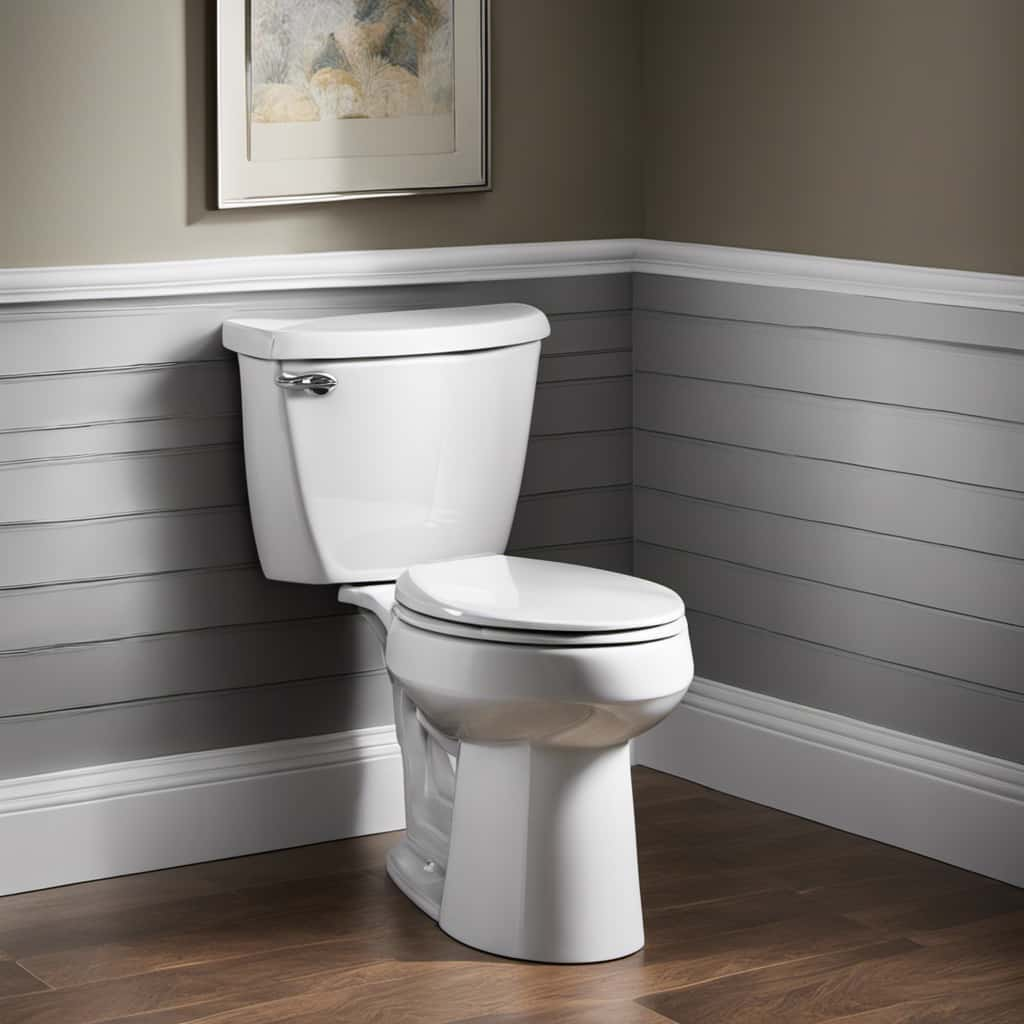
- Stubborn Hair Clogs: Hair can accumulate over time, creating a dense blockage that’s difficult to remove. Professional plumbers have specialized tools and techniques to dislodge and remove these stubborn clogs without causing further damage to the plumbing system.
- Pipe Damage: Hair clogs can put excessive pressure on pipes, leading to cracks, leaks, or even pipe bursts. Professional plumbers can assess the extent of the damage and provide appropriate repairs or replacements to ensure the integrity of the plumbing system.
- Preventive Maintenance: Professional plumbers not only address existing hair clogs but also offer preventive maintenance services to keep drains clear and minimize future issues. They can provide routine inspections, cleaning, and suggest suitable drain strainers or filters to prevent hair from entering the drain in the first place.
Frequently Asked Questions
Can I Use Vinegar and Baking Soda to Dissolve Hair in My Drain?
Yes, you can use a vinegar and baking soda combo as a natural drain cleaner. The acidic properties of vinegar help break down the hair, while the baking soda acts as a gentle abrasive. When combined, they create a fizzing reaction that can dislodge and dissolve hair clogs in your drain.
However, it’s important to note that this method may not be as effective for severe clogs. In such cases, it’s recommended to consult a professional plumber.
How Does Hydrogen Peroxide Help Dissolve Hair in Drains?
Hydrogen peroxide is a powerful solution for dissolving hair in drains. Its bubbling action helps break down the hair, allowing it to be easily washed away.
Additionally, hydrogen peroxide has antibacterial properties, which can help eliminate any odor-causing bacteria in the drain.
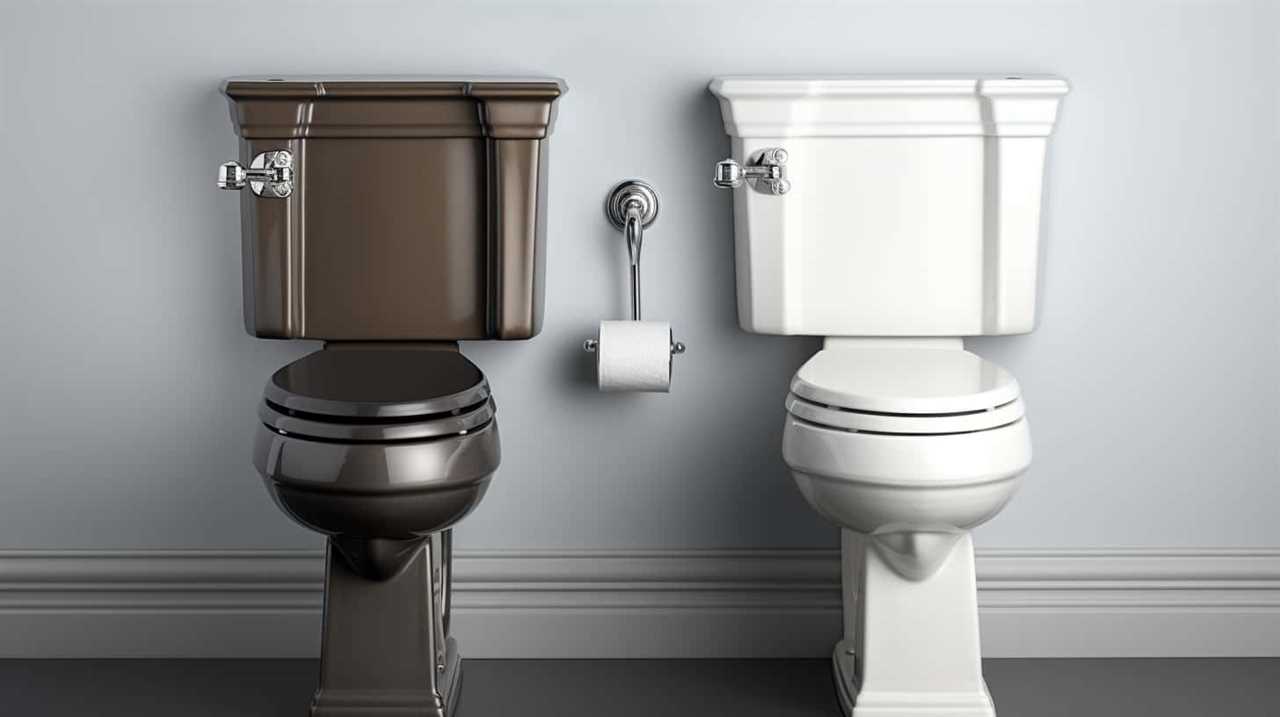
Using hydrogen peroxide regularly as part of your drain maintenance routine can prevent hair clogs from forming in the first place.
To effectively prevent hair clogs, consider using drain covers or traps to catch hair before it goes down the drain.
Are Enzyme-Based Drain Cleaners Effective in Removing Hair Clogs?
Enzymatic drain cleaners can be effective in removing hair clogs. These cleaners contain enzymes that break down the proteins in hair, allowing it to dissolve and flow down the drain.
However, their effectiveness may vary depending on the severity of the clog. In some cases, alternative methods such as using a drain snake or hot water can also help remove hair clogs.

It’s important to choose the method that suits your specific situation for optimal results.
What Are Some Examples of Chemical Hair Removal Products That Can Be Used to Dissolve Hair in Drains?
When it comes to removing hair clogs in drains, there are various options available.
Chemical methods, such as using drain cleaners specifically designed to dissolve hair, can be effective. These products often contain strong chemicals that break down the hair and clear the blockage.
However, it’s important to consider natural alternatives and mechanical methods as well, which may be gentler on the pipes and the environment.

Is It Safe to Use a Wet/Dry Vacuum to Remove Hair Clogs From Drains?
Using a wet/dry vacuum to remove hair clogs from drains can be a safe and effective method. However, it’s important to follow safety guidelines and precautions, such as wearing protective gloves and eyewear.
If you prefer alternative methods, there are chemical hair removal products available that can dissolve hair in drains. It’s crucial to choose products specifically designed for this purpose and carefully follow the instructions.
Regular maintenance and prevention can also help minimize hair clogs in drains.
Conclusion
In conclusion, choosing the right method to dissolve hair in drains is essential for maintaining a healthy plumbing system. Whether it’s using vinegar and baking soda, hydrogen peroxide, enzyme-based cleaners, or professional plumbing services, taking prompt action is crucial.

By incorporating these effective techniques, you can prevent clogged drains and ensure smooth water flow. So, don’t wait until the situation worsens, take action now and keep your drains hair-free.



